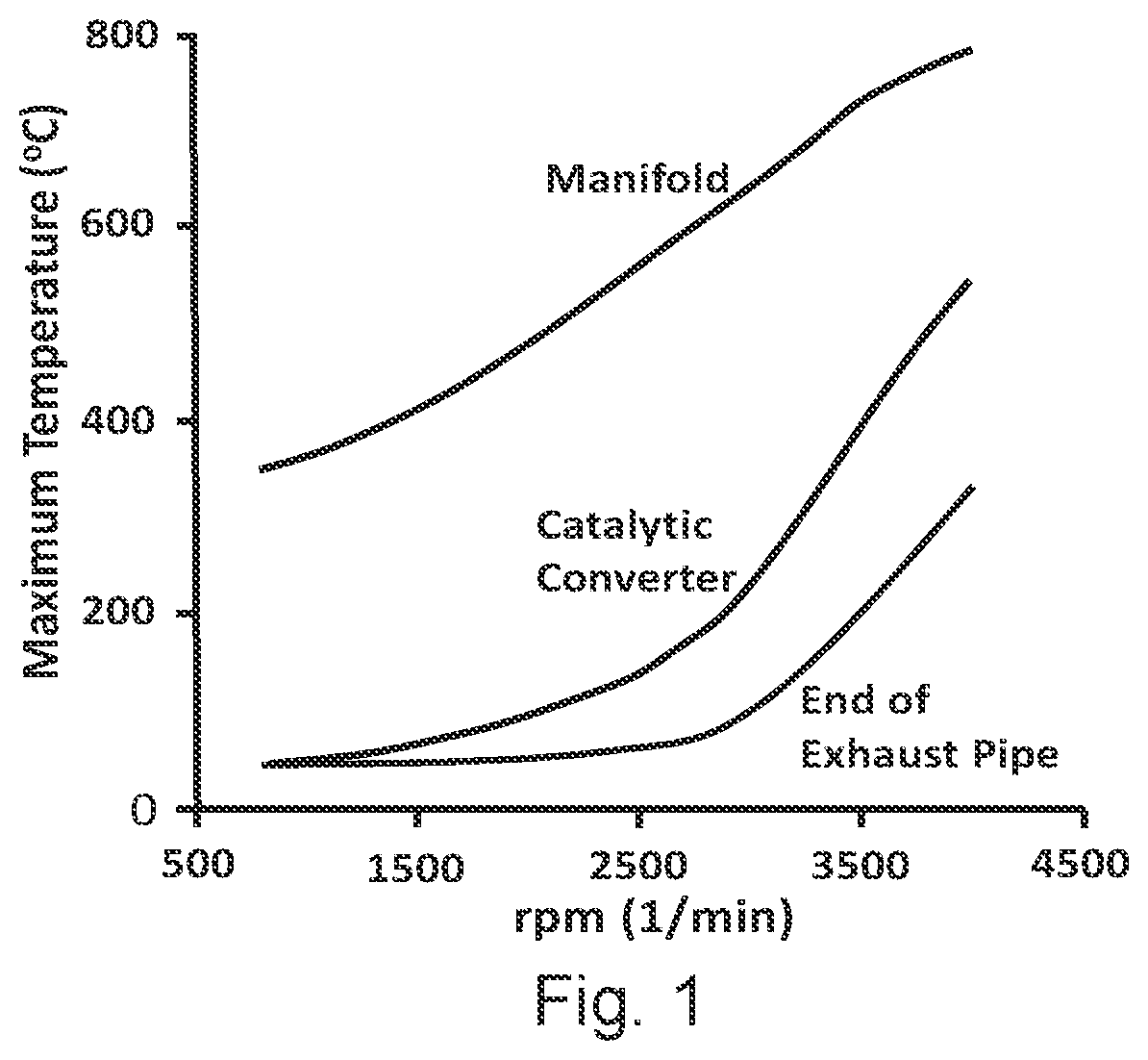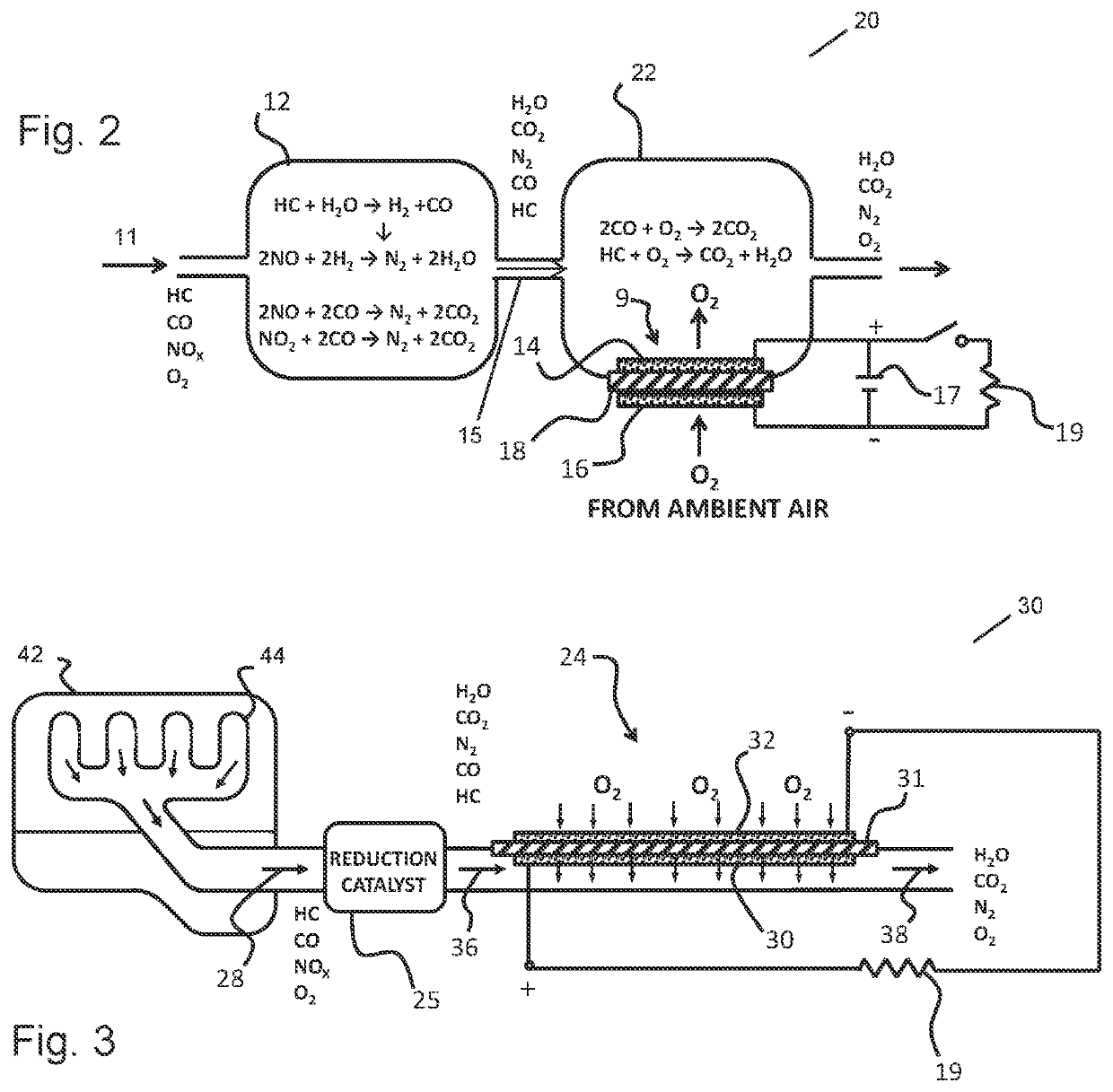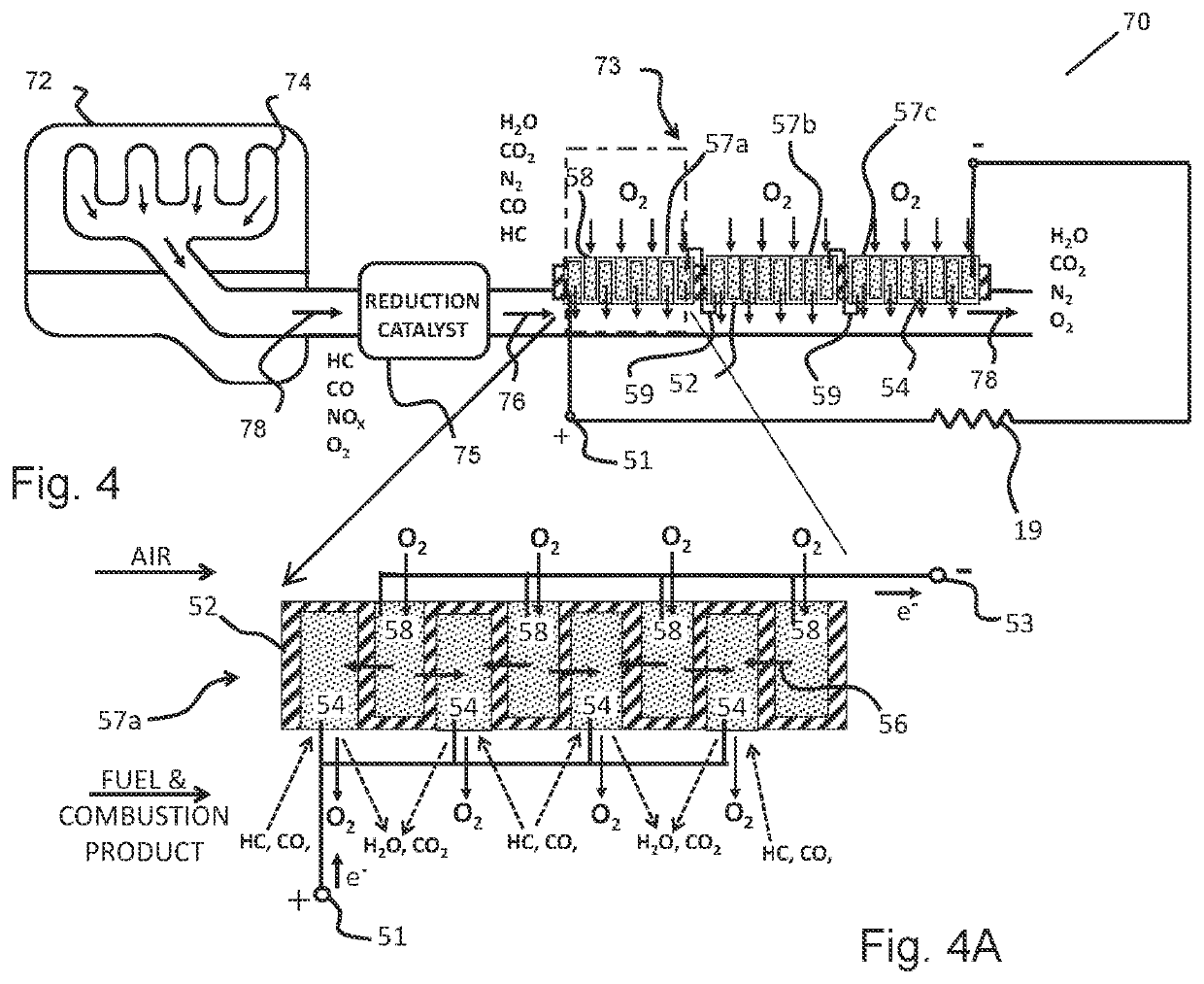Exhaust gas energy recovery converter
- Summary
- Abstract
- Description
- Claims
- Application Information
AI Technical Summary
Benefits of technology
Problems solved by technology
Method used
Image
Examples
Embodiment Construction
[0022]Referring to FIG. 2, there is shown an energy recovery converter 20 for exhaust gases or waste heat, namely a catalytic converter 20, and more particularly a three-way type catalytic converter 20, according to the present invention. The catalytic converter 20 reduces toxic gases and pollutant in exhaust gas, such as from an internal combustion engine, into less-toxic or harmful exhaust gas. The catalytic converter 20 includes a first chamber 12 and a second chamber 22. The first chamber 12 includes one or more reduction catalysts (and is therefore a catalytic reduction chamber) and the second chamber 22 includes one or more oxidation catalysts (and is therefore a catalytic oxidation chamber). Examples of the reduction catalysts include, but are not limited to, rhodium, platinum, transition metal macrocycles and chalgogenides. In a preferred embodiment, the reduction catalyst of the first chamber 12 is rhodium metal, and more particularly finely divided rhodium metal.
[0023]Engi...
PUM
| Property | Measurement | Unit |
|---|---|---|
| Electrical conductor | aaaaa | aaaaa |
| Content | aaaaa | aaaaa |
Abstract
Description
Claims
Application Information
 Login to View More
Login to View More - R&D
- Intellectual Property
- Life Sciences
- Materials
- Tech Scout
- Unparalleled Data Quality
- Higher Quality Content
- 60% Fewer Hallucinations
Browse by: Latest US Patents, China's latest patents, Technical Efficacy Thesaurus, Application Domain, Technology Topic, Popular Technical Reports.
© 2025 PatSnap. All rights reserved.Legal|Privacy policy|Modern Slavery Act Transparency Statement|Sitemap|About US| Contact US: help@patsnap.com



